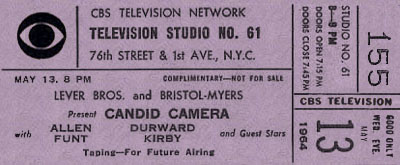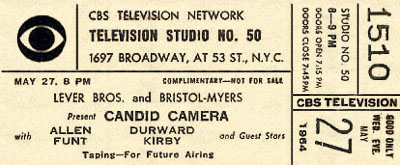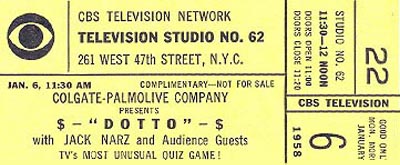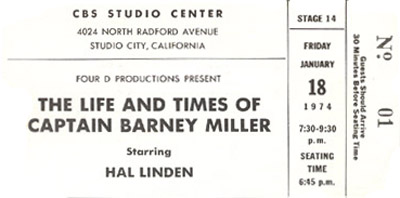Brothers, The

The Brothers was one of the 87,000 TV series Gale Gordon appeared on…but really the only one that had him as the lead. It was created when Our Miss Brooks went off and someone at Desilu (probable Desi or Lu) realized that Gordon would be at liberty. So they paired him up with Bob Sweeney, who had previously been in a comedy team with Hal March, and Gordon and Sweeney played two bachelor brothers who operated a photography studio and shared an apartment in San Francisco. Gordon was Harvey Box. Sweeney was Gilmore “Gilly” Box and they kept getting mixed up in each other’s problems and those of their father, played at first by Frank Orth and later by Howard McNear.
Unlike most shows with Gale Gordon on them, this one didn’t last long. It went on the air on October 20, 1956 and went off on September 7 the following year. Gordon went on to other shows. Sweeney segued from performing to directing and was quite successful at it. The show also featured Barbara Billingsley as Gordon’s lady friend. When it was cancelled, she went right over to a fruitful job as the mother on Leave it to Beaver.
Al Jarvis Show, The

Al Jarvis (1909-1970) was one of the first radio disc jockeys in Los Angeles and one of the first to start doing television. Starting around 1947 and continuing through the fifties, he usually had a daily radio program and a daily TV show. The radio one was usually Make-Believe Ballroom and the TV one was either a dance party show, a talk show or some combination of the two forms. The above ticket is from 1952 when he was broadcasting on KECA-TV, which was then the name of the L.A. ABC affiliate. Ob February 1 of 1951, KECA switched over to become KABC.
Candid Camera


New York born producer Allen Funt started Candid Microphone in 1947 as a series on ABC radio. The premise was pretty simple: Play tricks on people and record the fun with a hidden microphone. The radio show led quickly to a TV version and a series of film shorts, and soon it was all called Candid Camera. Funt and his merry band of tricksters appeared all over the TV dial throughout the fifties, either as a guest spot or a recurring segment on other shows like The Garry Moore Show or The Tonight Show. There was also a short-lived syndicated series.
But the franchise didn’t really take off until 1960 when CBS bought a weekly prime-time series that lasted until 1967. Funt co-hosted with Arthur Godfrey at first, then Durward Kirby and later, Bess Myerson. There were a couple of later syndicated versions but the tickets above are from the CBS run. You’ll notice that though they’re from the same month, they’re for different studios. That’s because Candid Camera was the wandering nomad of the CBS lineup. The network had several studios in Manhattan and Candid Camera would tape in whichever one wasn’t busy at the moment. They could do this because the set was so simple and all the show required was for two people to sit in chairs and talk.
I never cared much for “hidden camera” prank shows but that may be because Funt’s many imitators gave the premise a bad name. None of them ever did it as well.
Dotto

The game show Dotto aired on CBS daytime from January 6, 1958 through August 15, 1958. There was a nighttime version that ran on NBC from July 1 of that year until August 12. During the few months of its existence, it was a tremendous, highly-rated hit.
So why was it cancelled so quickly? Simple: It was rigged.
Dotto was the game show that triggered the great game show scandal. It was a simple show with two contestants competing for big prizes. On the set, each could see the same dot-to-dot puzzle. The host, Jack Narz, would ask a general knowledge question and a contestant would ring in if he or she thought they could answer it. If they were right, they banked dollars and more of the dots would be connected on the puzzle they could see. They would then have a chance to identify the image of the puzzle and if they were right, they would win the game, the money they’d banked and additional prizes. There was a little more to the game than that but not much…and it was very exciting because, in part, the producers manipulated things to make it exciting.
In May, a standby contestant named Ed Hilgemeier (nicknamed “Skinny Eddie” backstage and by the staff) watched from backstage as a woman named Marie Winn, the show’s long-running, undefeated champ, easily defeated a challenger named Yeffe Kimball Slatin. Shortly after, returning to the room where contestants were kept, Hilgemeier happened to find a notebook belonging to Winn. In it, he found the questions and answers that had just been asked on the show. Hilgemeier showed it to Slatin and together, they approached the show’s producers and threatened to go public with this evidence of rigging. The producers agreed to pay them to keep quiet.
Soon after though, “Skinny Eddie” took the matter to the Manhattan district attorney. Some reports say he was angry because the producers had declined to pay additional money he demanded. Others say he got scared that the truth would leak and he’d find himself implicated in a scandal. Either way, he blew the lid off the cover-up and it got into the press. CBS and the show’s sponsor, Colgate, looked into the matter and Dotto quickly disappeared. There was no evidence that Jack Narz was involved in the deception and his career continued, unharmed. He went on to host many other game shows, including Video Village. Not long after, it came out that some other game shows were not on the up-and-up…but Dotto was the first to fall.
Barney Miller


Barney Miller was a popular situation comedy which ran on ABC from January 23, 1975 to May 20, 1982. It starred Hal Linden as the Captain of the 12 precinct of the New York Police Department. Also in the cast were Max Gail, Ron Carey, Abe Vigoda, Ron Glass, Steve Landesberg, Jack Soo, James Gregory and Gregory Sierra. Some of those actors came and went (Vigoda left to star in a spin-off, Fish) and one died (Soo, during Season 5).
Abby Dalton played Miller’s wife in the pilot — taped at CBS and called The Life and Times of Captain Barney Miller — which also included Linden and Vigoda. ABC did not like the end product and the result was played off among other unsold pilots in the Summer of ’74. But in the meantime, creators Danny Arnold and Theodore Flicker had reconfigured the show and shot another pilot which ABC picked up for mid-season status. The second ticket above is from a taping done more than a month before the show debuted. The new version featured Barbara Barrie as Miller’s wife but the producers soon decided that the show should be about the Captain’s job, not his home life, and Barrie’s character wound up getting mentioned often but was rarely seen.
Barney Miller tapings were notorious throughout the industry for their marathon hours. It was not uncommon for the evening taping to be followed by a complete rewrite of the script. The audience would depart and the writers would go to work with producer Danny Arnold supervising or doing most of the heavy lifting. Retaping would eventually commence and could easily last until 1 or 2 AM. There were nights when it did not conclude until much later, with some tapings reportedly stretching until dawn. Needless to say, some episodes as aired contained nothing that had been taped before the live audience and were sweetened with canned laughter. But the show was successful and received multiple Emmys, Golden Globes and even a Peabody, so most involved seemed to think it was all worth it.






